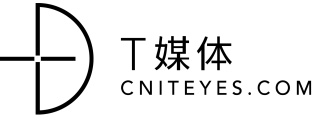企业如何看待付费用户和免费用户的反馈? | 双语
译者:张苏月 关键词:付费用户,免费用户,反馈译者:张苏月 关键词:付费用户,免费用户,反馈 核心提示:作为一家以用户为导向的企业,如何看待用户的反馈很重要。付费用户和免费用户的反馈有所不同,就需要企业以付费用户为主,同时通过倾听来抓住潜在的免费用户。 当涉及到用户问题时,正确地看待用户与做出行动满足客户需求之间是有差异的。 要记住
 核心提示:作为一家以用户为导向的企业,如何看待用户的反馈很重要。付费用户和免费用户的反馈有所不同,就需要企业以付费用户为主,同时通过倾听来抓住潜在的免费用户。
当涉及到用户问题时,正确地看待用户与做出行动满足客户需求之间是有差异的。
要记住的关键一点是客户——付费并使用产品的人,应该是你所做的一切事情的中心。这听起来简单,但当除了付费用户外还有免费用户的话,事情就变得有点复杂了。
当然,你绝对需要先听从付费用户的意见,这是毫无疑问的。毕竟,是他们发现了你的产品价值并且愿意付钱使用。而且在许多情况下,他们很乐意付钱——就像我们乐意为办公协同工具Slack付费一样,因为我们发现它对我们的业务非常有价值。
但与此同时,你也不想忽视免费用户的反馈……因为有一天他们可能会成为客户,即付费用户,因此这类用户的经验对你的产品发展同样重要。
所以,最终会发生什么呢?尽管你试图让每为客户都高兴,但很快就会被数不尽的反馈淹没。
知道该听什么,该听谁的
其中一个根本的问题是,你从免费用户和付费用户那里得到的反馈通常是有天壤之别的。
付费用户通常更熟悉产品的来龙去脉,所以他们倾向于关注公司的产品是否能使他们所做的事情发展的更快,或者让事情变得更容易做。
如果您使用的是Spotlight Framework这一产品来处理客户反馈,这些客户需求将被分入用户体验范畴。
例如,客户可能会问,“我怎么才能获得这部分应用程序以便加载更快呢?”或者他们可能会说,“我试图使用这个应用程序的一部分,但是没法弄明白。”
核心提示:作为一家以用户为导向的企业,如何看待用户的反馈很重要。付费用户和免费用户的反馈有所不同,就需要企业以付费用户为主,同时通过倾听来抓住潜在的免费用户。
当涉及到用户问题时,正确地看待用户与做出行动满足客户需求之间是有差异的。
要记住的关键一点是客户——付费并使用产品的人,应该是你所做的一切事情的中心。这听起来简单,但当除了付费用户外还有免费用户的话,事情就变得有点复杂了。
当然,你绝对需要先听从付费用户的意见,这是毫无疑问的。毕竟,是他们发现了你的产品价值并且愿意付钱使用。而且在许多情况下,他们很乐意付钱——就像我们乐意为办公协同工具Slack付费一样,因为我们发现它对我们的业务非常有价值。
但与此同时,你也不想忽视免费用户的反馈……因为有一天他们可能会成为客户,即付费用户,因此这类用户的经验对你的产品发展同样重要。
所以,最终会发生什么呢?尽管你试图让每为客户都高兴,但很快就会被数不尽的反馈淹没。
知道该听什么,该听谁的
其中一个根本的问题是,你从免费用户和付费用户那里得到的反馈通常是有天壤之别的。
付费用户通常更熟悉产品的来龙去脉,所以他们倾向于关注公司的产品是否能使他们所做的事情发展的更快,或者让事情变得更容易做。
如果您使用的是Spotlight Framework这一产品来处理客户反馈,这些客户需求将被分入用户体验范畴。
例如,客户可能会问,“我怎么才能获得这部分应用程序以便加载更快呢?”或者他们可能会说,“我试图使用这个应用程序的一部分,但是没法弄明白。” 与此同时,免费用户的反馈则倾向于产品营销分类。这些用户有时只是外在地审视你的产品,看看它能否为他们所用。所以他们会问这样的问题:“你的产品能与这个平台同步吗?”或“我能自己操作它吗?”
在某些情况下,销售代表会跑过来对我说,“Elias,我线上有这么一位潜在的大客户,他们打算买我们的产品,但前提是希望我们能将这个新的特性添加到产品上。”
每当类似事情发生的时候,我的回答总是一样的:“我们将构建这种功能,但只有是在他们成为付费用户以后。因为作为一个面向用户的公司,我们首先需要关注的是现有客户的需求。”
在我看来,如果没有人发现你产品的真正价值,那么他们可能就不适合用你的产品。以售出产品为目的添加特定功能永远不是一种好的做法,因为在这一点上,解决销售和个别问题比满足现有客户的需求更重要,不要本末倒置。
所以当处理用户反馈问题时,你不仅需要考虑你听到了什么,而且需要考虑你是从谁那儿听到的。
优先解决付费用户的需求,同时通过倾听抓住免费用户
与此同时,免费用户的反馈则倾向于产品营销分类。这些用户有时只是外在地审视你的产品,看看它能否为他们所用。所以他们会问这样的问题:“你的产品能与这个平台同步吗?”或“我能自己操作它吗?”
在某些情况下,销售代表会跑过来对我说,“Elias,我线上有这么一位潜在的大客户,他们打算买我们的产品,但前提是希望我们能将这个新的特性添加到产品上。”
每当类似事情发生的时候,我的回答总是一样的:“我们将构建这种功能,但只有是在他们成为付费用户以后。因为作为一个面向用户的公司,我们首先需要关注的是现有客户的需求。”
在我看来,如果没有人发现你产品的真正价值,那么他们可能就不适合用你的产品。以售出产品为目的添加特定功能永远不是一种好的做法,因为在这一点上,解决销售和个别问题比满足现有客户的需求更重要,不要本末倒置。
所以当处理用户反馈问题时,你不仅需要考虑你听到了什么,而且需要考虑你是从谁那儿听到的。
优先解决付费用户的需求,同时通过倾听抓住免费用户
 在大多数情况下,你从付费客户也就是那些每天都使用你产品的人,那里得到的产品反馈和特性需求,应该比你从免费用户那里得到的更受到重视。
所以最终,基于客户反馈最为频繁的产品问题,我们尽量优先考虑哪些特性需要构建。当越来越多的人开始提出同样的需求,并且这些需求越来越频繁,我们就知道需要解决的真正的问题所在。
而碰巧这些人往往是付费用户,因为他们比任何人都了解产品的哪些部分可以改进。所以他们最终都找到相同的产品弱点,并且反馈给我们。
解决这些产品问题,并且当这些问题一出现的时候就尽快为客户解决,这样就会使客户在惊讶中获得满意的服务效果。而这也是保持产品粘性的途径所在。
当然,这也是避免客户流失的好方法。
但是,我们将免费用户的反馈置于何处呢?当他们给出反馈意见或者请求添加新的产品特性时,我们仅仅忽略掉就行了吗?
我的建议是:不要忽视他们并且向他们问问题。
因此,如果一个免费用户告诉你产品需要某某特性,那么你就可以问,“为什么你认为我们的产品需要添加某某特性?你需要这种特性来完成什么呢?”
然后你可以更加深入地询问:“你目前正在使用另一个拥有该特性的产品吗?你在使用它的过程中有什么问题吗?你使用产品的时候在哪里卡住了?”
那么,在一天结束的时候,你可能会对很多的这些产品特性需求予以否认,但这并不意味着你必须以拒绝的方式结束与这位免费用户谈话。把它当作一次客户调查的机会。问一些问题。
虽然你不能总是承诺他们你会做他们询问的事情,但你可以告诉他们你正在倾听他们的心声。
英文原文
The Differences Between Feedback From Paying Customers vs. Free Users
When it comes to being customer-driven, there's a difference between treating people right and doing everything that people ask.
A key thing to remember is that customers -- the people who pay to use your product -- should be central to everything you do. It sounds simple, but when you have free users in addition to paying customers (like us), things get a bit trickier.
Of course, you absolutely need to listen to your paying customers first. After all, they're the people who have found so much value in your product that they're willing to pay for it. (And in many cases, they're happy to being paying for it -- just like we're happy to be paying for Slack, since we find it so valuable to our business.)
But at the same time, you don't want to ignore the feedback you're getting from your free users ... they could become customers someday. So the experience they have with your product matters as well.
So what ends up happening? You try to make everybody happy and soon get overwhelmed by an avalanche of feedback.
Knowing what to listen for (and who to listen to)
One of the underlying issues here is that the feedback you get from your free users is usually pretty different from the feedback you get from paying customers.
Paying customers are typically more familiar with the ins and outs of your product, so they tend to ask if you can make things faster, or make things easier to do.
If you were using the Spotlight Framework for processing customer feedback, these customer requests would fall into the user experience category.
For example, a customer might ask something like, "How do I get this part of your app to load faster?" Or they might say something like, "I tried to use this part of your app but couldn't figure it out."
Free users, meanwhile, skew more towards the product marketing category with their feedback. These users are sometimes just scoping your product out, seeing if it could work for them. So they'll ask questions like, "Can you sync with this platform?" or "Can I host this myself?"
In some cases, a sales rep will come to me and say, "Elias, I have this big potential customer on the line, and they're going to buy ... but only if we add this new feature to the product first."
Whenever this happens, my response is always the same: "We'll build the feature ... but only after they become paying customers. Because as a customer-driven company, we need to focus on the needs of our existing customers first."
The way I see it, if someone doesn't find value in your product as it is, they're probably not a good fit for your product. Having a sale hinge on adding a specific feature is never a good move -- because at that point, solving for the sale and solving for that individual use-case becomes more important than solving for your existing customers.
So when processing feedback, you need to take into account not only what you're hearing, but also who you're hearing it from.
在大多数情况下,你从付费客户也就是那些每天都使用你产品的人,那里得到的产品反馈和特性需求,应该比你从免费用户那里得到的更受到重视。
所以最终,基于客户反馈最为频繁的产品问题,我们尽量优先考虑哪些特性需要构建。当越来越多的人开始提出同样的需求,并且这些需求越来越频繁,我们就知道需要解决的真正的问题所在。
而碰巧这些人往往是付费用户,因为他们比任何人都了解产品的哪些部分可以改进。所以他们最终都找到相同的产品弱点,并且反馈给我们。
解决这些产品问题,并且当这些问题一出现的时候就尽快为客户解决,这样就会使客户在惊讶中获得满意的服务效果。而这也是保持产品粘性的途径所在。
当然,这也是避免客户流失的好方法。
但是,我们将免费用户的反馈置于何处呢?当他们给出反馈意见或者请求添加新的产品特性时,我们仅仅忽略掉就行了吗?
我的建议是:不要忽视他们并且向他们问问题。
因此,如果一个免费用户告诉你产品需要某某特性,那么你就可以问,“为什么你认为我们的产品需要添加某某特性?你需要这种特性来完成什么呢?”
然后你可以更加深入地询问:“你目前正在使用另一个拥有该特性的产品吗?你在使用它的过程中有什么问题吗?你使用产品的时候在哪里卡住了?”
那么,在一天结束的时候,你可能会对很多的这些产品特性需求予以否认,但这并不意味着你必须以拒绝的方式结束与这位免费用户谈话。把它当作一次客户调查的机会。问一些问题。
虽然你不能总是承诺他们你会做他们询问的事情,但你可以告诉他们你正在倾听他们的心声。
英文原文
The Differences Between Feedback From Paying Customers vs. Free Users
When it comes to being customer-driven, there's a difference between treating people right and doing everything that people ask.
A key thing to remember is that customers -- the people who pay to use your product -- should be central to everything you do. It sounds simple, but when you have free users in addition to paying customers (like us), things get a bit trickier.
Of course, you absolutely need to listen to your paying customers first. After all, they're the people who have found so much value in your product that they're willing to pay for it. (And in many cases, they're happy to being paying for it -- just like we're happy to be paying for Slack, since we find it so valuable to our business.)
But at the same time, you don't want to ignore the feedback you're getting from your free users ... they could become customers someday. So the experience they have with your product matters as well.
So what ends up happening? You try to make everybody happy and soon get overwhelmed by an avalanche of feedback.
Knowing what to listen for (and who to listen to)
One of the underlying issues here is that the feedback you get from your free users is usually pretty different from the feedback you get from paying customers.
Paying customers are typically more familiar with the ins and outs of your product, so they tend to ask if you can make things faster, or make things easier to do.
If you were using the Spotlight Framework for processing customer feedback, these customer requests would fall into the user experience category.
For example, a customer might ask something like, "How do I get this part of your app to load faster?" Or they might say something like, "I tried to use this part of your app but couldn't figure it out."
Free users, meanwhile, skew more towards the product marketing category with their feedback. These users are sometimes just scoping your product out, seeing if it could work for them. So they'll ask questions like, "Can you sync with this platform?" or "Can I host this myself?"
In some cases, a sales rep will come to me and say, "Elias, I have this big potential customer on the line, and they're going to buy ... but only if we add this new feature to the product first."
Whenever this happens, my response is always the same: "We'll build the feature ... but only after they become paying customers. Because as a customer-driven company, we need to focus on the needs of our existing customers first."
The way I see it, if someone doesn't find value in your product as it is, they're probably not a good fit for your product. Having a sale hinge on adding a specific feature is never a good move -- because at that point, solving for the sale and solving for that individual use-case becomes more important than solving for your existing customers.
So when processing feedback, you need to take into account not only what you're hearing, but also who you're hearing it from. In most cases, the feedback and feature requests you get from paying customers -- people who use your product day-in, day-out -- should be given more weight than the suggestions you get from free users who have just signed up.
Ultimately, we try to prioritize what features we build based on customer feedback and what we're hearing the most from people. When more and more people start requesting the same thing, and those requests start happening more and more frequently, we know there's a real issue that we need to address.
It just so happens that the people who make these shared requests tend to be paying customers, since they're the ones who know better than anyone what could be improved upon. So they all end up finding the same weak spots in the product and telling us about them.
Addressing those weak spots and solving problems for customers as soon as they appear is how you "wow" your customers. And it's how you make your product sticky.
And it's how you avoid churn.
But where does that leave us with free users? Do we just ignore them when they give us feedback, or when they request new features?
Here's my recommendation: Don't ignore them, ask them questions.
So if a free user tells you that the product needs X, ask them, "Why do you think the product needs X? What would you use X for?"
And then you can dig deeper: "Are you currently using another product for X? Are you having problems using it? Where are you stuck?"
At the end of the day, you're going to have to say "no" to a lot of these feature requests ... but that doesn't mean you have to end the conversation you have with a free user at a "no." Treat it as opportunity to do customer research. Ask questions.
While you can't always promise them you'll do what they're asking, you can always show them that you're listening.
In most cases, the feedback and feature requests you get from paying customers -- people who use your product day-in, day-out -- should be given more weight than the suggestions you get from free users who have just signed up.
Ultimately, we try to prioritize what features we build based on customer feedback and what we're hearing the most from people. When more and more people start requesting the same thing, and those requests start happening more and more frequently, we know there's a real issue that we need to address.
It just so happens that the people who make these shared requests tend to be paying customers, since they're the ones who know better than anyone what could be improved upon. So they all end up finding the same weak spots in the product and telling us about them.
Addressing those weak spots and solving problems for customers as soon as they appear is how you "wow" your customers. And it's how you make your product sticky.
And it's how you avoid churn.
But where does that leave us with free users? Do we just ignore them when they give us feedback, or when they request new features?
Here's my recommendation: Don't ignore them, ask them questions.
So if a free user tells you that the product needs X, ask them, "Why do you think the product needs X? What would you use X for?"
And then you can dig deeper: "Are you currently using another product for X? Are you having problems using it? Where are you stuck?"
At the end of the day, you're going to have to say "no" to a lot of these feature requests ... but that doesn't mean you have to end the conversation you have with a free user at a "no." Treat it as opportunity to do customer research. Ask questions.
While you can't always promise them you'll do what they're asking, you can always show them that you're listening.评论
- 暂时没有评论,来说点什么吧







